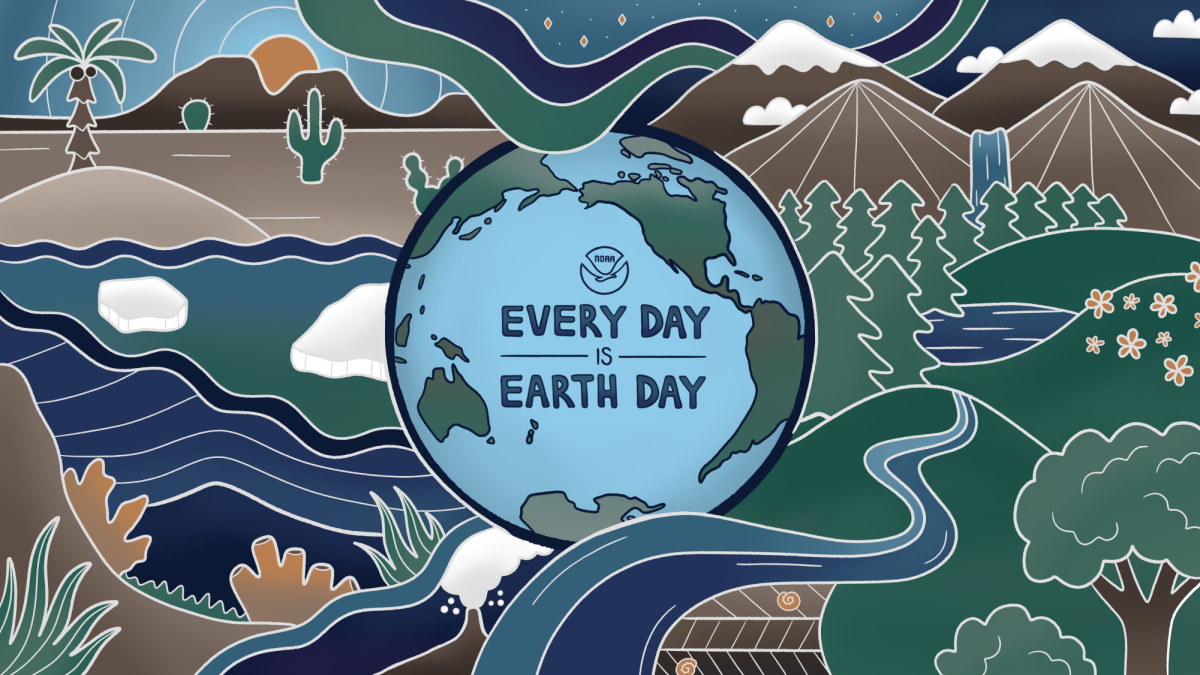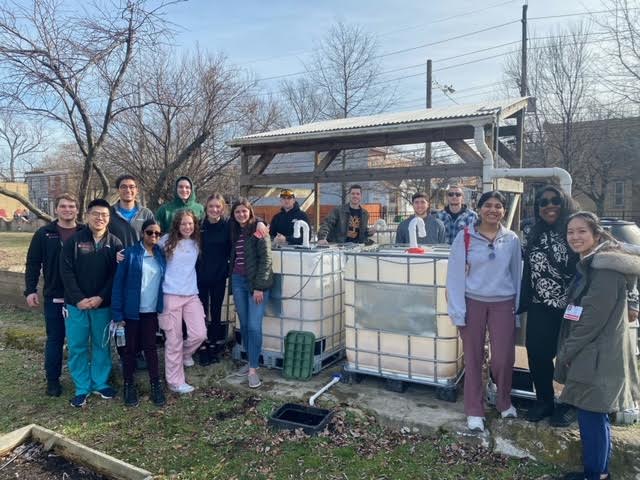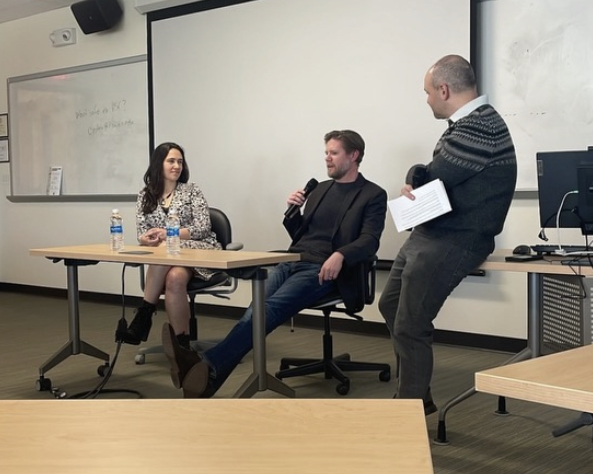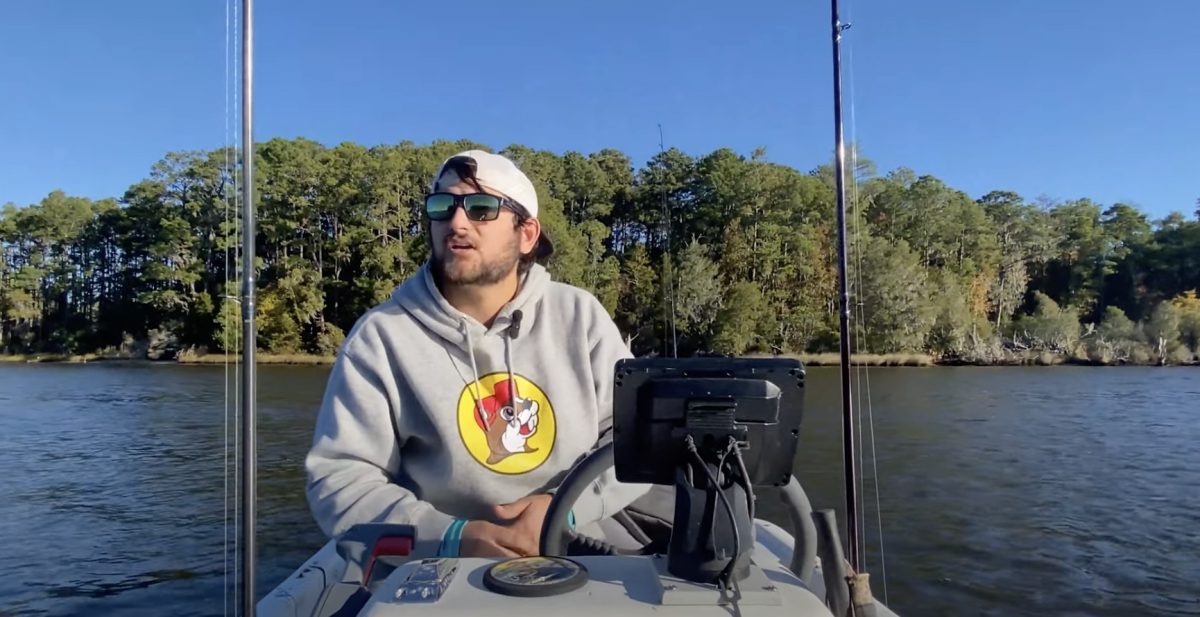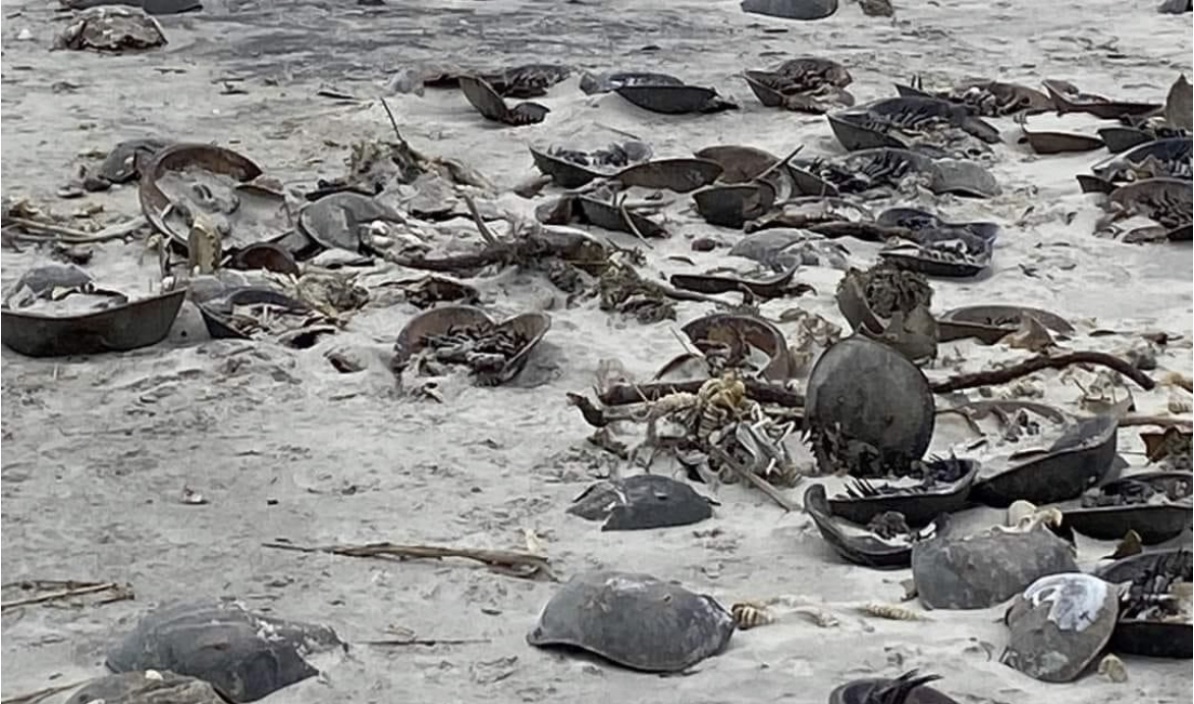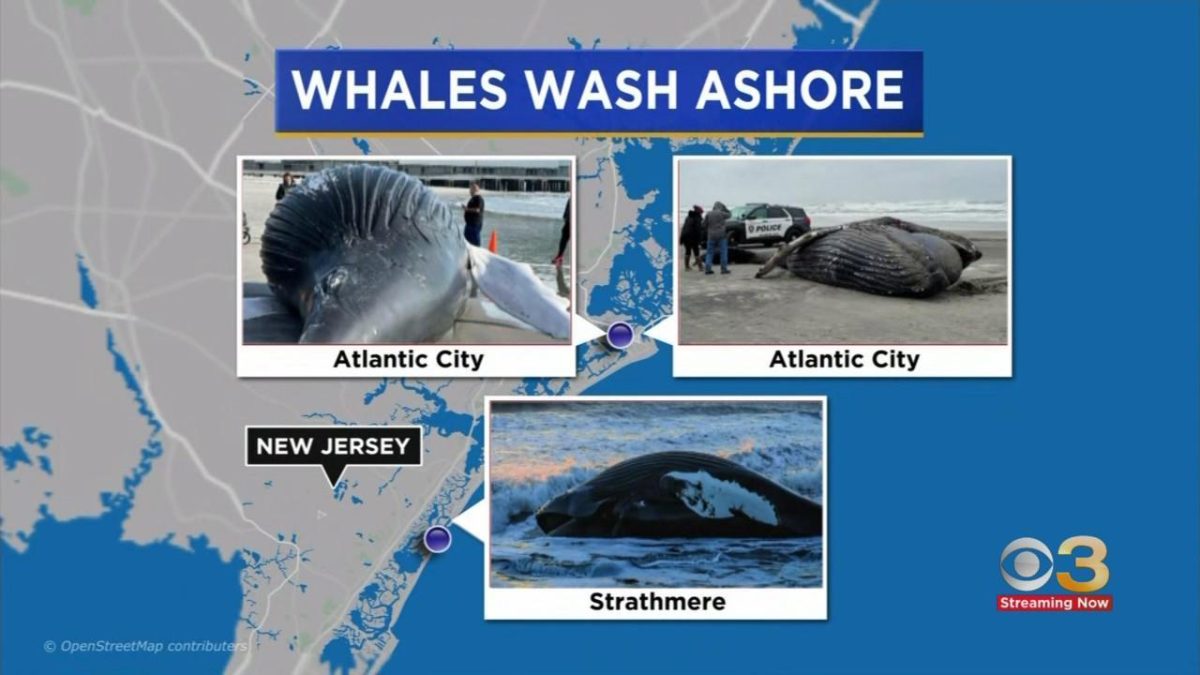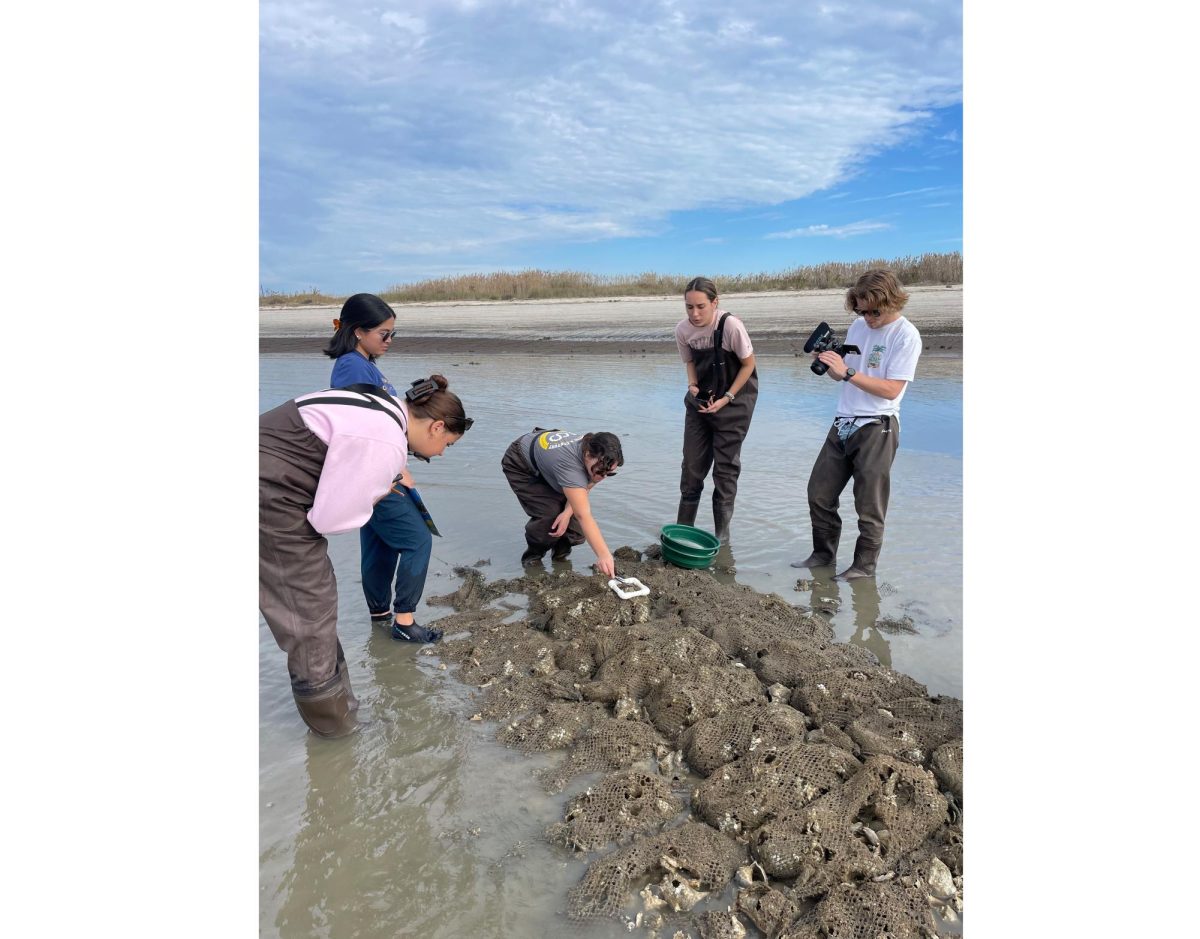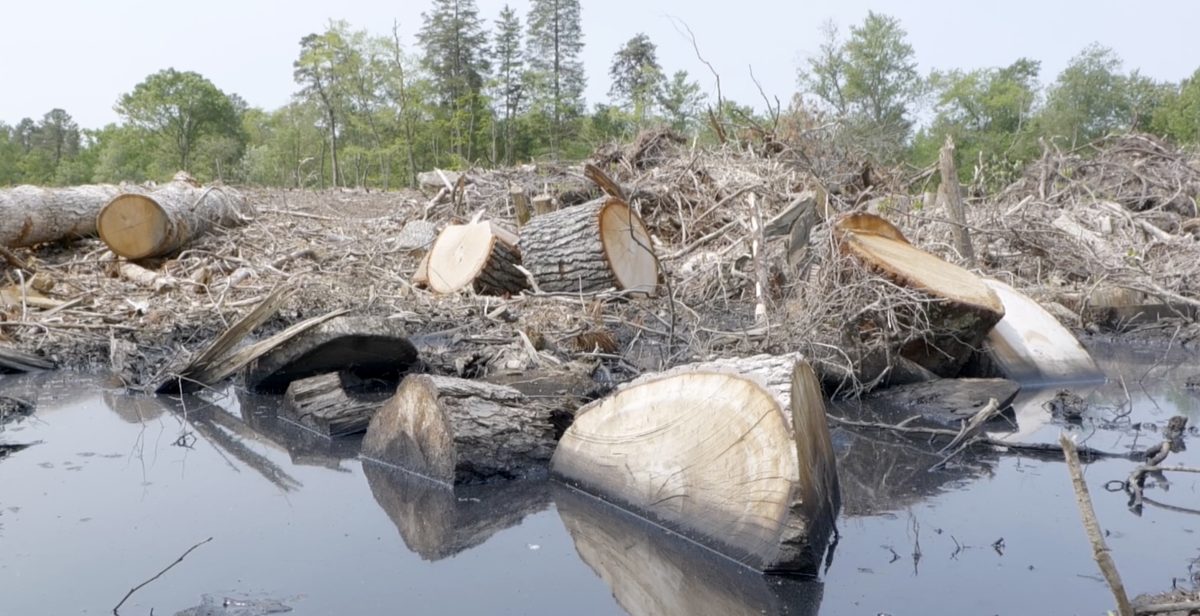Dinosaurs were some of the most incredible and massive creatures to walk on Earth. After ruling as the dominant species for 165 million years, they perished at the end of the Cretaceous Period about 65 million years ago. The Cretaceous–Paleogene (K–Pg) extinction event or the fifth mass extinction wiped out an estimated 75% of species living at the time.
Many scientists believe the fifth mass extinction was caused by a meteor impact in today’s Gulf of Mexico, compounded with high volcanic activity, which produced a significant amount of carbon dioxide that heavily contributed to the death of many species.
Dr. Kenneth Lacovara, who currently serves as the Founding Dean of the School of Earth and Environment at Rowan University and Director of the Jean and Ric Edelman Fossil Park, described the fifth extinction as “horrible beyond comprehension.” After the asteroid made impact, it left a crater in the Earth’s surface that was “110 miles across and 12 miles deep, so that’s roughly New Jersey,” he said.
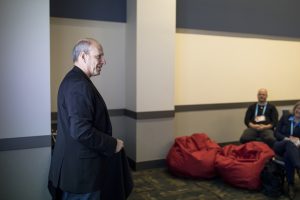
“Imagine what New Jersey weighs, you take that amount of rock, you put it up through the atmosphere, it goes into space, and even though it’s pulverized to maybe millimeter size, it still has the same mass,” Lacovara said.
When the material falls back into the atmosphere, it heats up due to friction.
“Imagine that day, trillions upon trillions of tiny millimeter size fireballs, each one flaming back into the atmosphere, each one heating up a little parcel of air around itself,” he said. “The result is, globally, that day, temperatures get up somewhere in the range of toaster oven to pizza oven.”
All non-avian dinosaurs were effectively wiped out by the cataclysmic firestorm after the meteor impact. Dust and gas in the atmosphere clouded out the sun which eliminated phytoplankton activity and killed marine life as well.
Due to the drastic change in temperatures associated with this event, the fifth mass extinction event can be considered related to climate change. The previous four mass extinctions on Earth were linked to climate change as well, Lacovara noted.
“The four are climate change so there is a parallel there,” he said. “What’s not the same and what’s scary is those four mass extinctions unfolded over millions or, in some cases, tens of millions of years of climate change, whereas our climate change is happening in less than 100 years.”
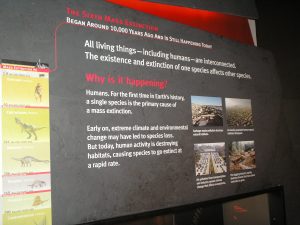
Scientists like Lacovara believe that the planet has entered the sixth period of extinction. They point to the massive emission of carbon dioxide from fossil fuels and its effect on the lives of many plants and animals. Scientists predict that this phenomenon will severely affect many life forms on Earth in the next three to four decades.
“You can look at the background rate of extinction for mammals, it’s about a species per century, that’s the rate over the last several million years,” Lacovara said. “Well, in the last 200 years, we have lost over 300 species of mammals.
“To really understand what we’re flying into, we have to look at Earth’s deep time record, which is a record of change, a record of contingency, and a record that tells us that things don’t have to be this particular way, that we’re going to have to fight for the future that we want,” he added.
According to an article featured in The Guardian, the previous five mass extinctions are:
- “End-Ordovician, 443 million years ago: A severe ice age led to sea level falling by 100 meters, wiping out 60-70% of all species which were prominently ocean dwellers at the time. Then soon after the ice melted leaving the oceans starved of oxygen.
- Late Devonian, c 360 million years ago: A messy prolonged climate change event, again hitting life in shallow seas very hard, killing 70% of species including almost all corals.
- Permian-Triassic, c 250 million years ago: The big one more than 95% of species perished including trilobites and giant insects – strongly linked to massive volcanic eruptions in Siberia that caused a savage episode of global warming.
- Triassic-Jurassic, c 200 million years ago: Three-quarters of species were lost, again most likely due to another huge outburst of volcanism. It left the Earth clear for dinosaurs to flourish.
- Cretaceous-Tertiary, 65 million years ago: A giant asteroid impact on Mexico, just after large volcanic eruptions in what is now India, saw the end of the dinosaurs and ammonites. Mammals, and eventually humans, took advantage.”
Potential Sixth Mass Extinction
Lacovara’s fight for the future and appreciation of the past is expressed in his role as Director of the Jean and Ric Edelman Fossil Park. The main goal of the park revolves around education about the past, present, and future of life on Earth. On-site, Lacovara and his colleagues conduct research and dig for fossils in the massive bone bed on the 65-acre property. Through exhibits, fossil digs, and displays that will be part of the park’s new net-zero-energy museum, Lacovara plans to impart an awareness of the fifth and potential sixth mass extinction.
“The research is ongoing at the fossil park,” he said. “We research very methodically and so we have an area now that’s about 220 square meters that we have excavated and because we collect the microfossils, the sediment, everything that goes along with it, it takes us a long time to make progress. So, it’s actually taken us 11 years to go 220 square meters but, within that 220 square meters, we have cataloged over 50,000 specimens and macro-specimens from that site. In terms of research, there’s almost an inexhaustible supply of fossils that are on the property.”
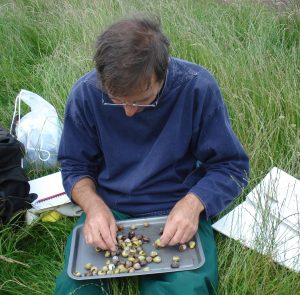
Similar to Lacovara, Dr. Robert Cowie of the University of Hawaiʻi at Mānoa, believes the sixth mass extinction is underway. Moreover, Cowie asserts it has reached an irreversible point. Cowie conducts research at the Pacific Biosciences Research Center at UH Mānoa and works in the Department of Zoology and Ecology as well as the Evolution and Conservation Biology Graduate Program.
Cowie’s research aims to gain an advanced understanding of non-marine biodiversity, both native and alien, primarily in the Pacific. His five main focuses are: biodiversity, emerging disease ecology, extinction and conservation, invasion biology, and apple snails.
In his article, “The Sixth Mass Extinction: Fact, Fiction, or Speculation?,” Cowie argues that extensive evidence indicates that there is a biodiversity crisis of increasing extinctions and plummeting abundances. Some argue, however, that the evidence does not support a sixth mass extinction. Opponents often reference the International Union for Conservation of Nature’s Red List to support the viewpoint that the rate of species loss does not differ from the background rate. Cowie disagrees.
“The Red List is heavily biased,” he wrote. “Almost all birds and mammals, but only a minute fraction of invertebrates, have been evaluated against conservation criteria. Incorporating estimates of the true number of invertebrate extinctions leads to the conclusion that the rate vastly exceeds the background rate and that we may indeed be witnessing the start of the sixth mass extinction.”
In terms of biodiversity in Hawaiʻi, Cowie stated that it had already passed the point of no return.
“We can’t go back,” he said. “Maybe we could go back with climate change, but we can’t go back with biodiversity because species have gone extinct. I don’t think there is the will to do it. We might be able to slow it down to some degree, only if there is a social, political, and economic will to do it.”
What Is the Main Force Behind It?
In a recent book talk hosted by Rowan University’s Hollybush Institute and Department of Environmental Science, author and researcher Dr. Mark Maslin of University College London told the story of the Anthropocene. The Anthropocene describes “the slice of Earth’s history during which people have become a geological force,” Maslin explained. His book, written with co-author Simon Lewis and titled, “The Human Planet: How We Created the Anthropocene,” explores Earth’s intricate geological past and tempestuous future due to immense geological pressure exerted by humans.
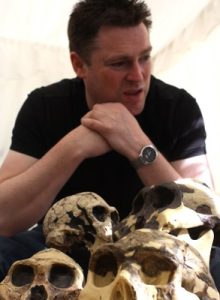
Maslin describes Earth’s history as a story of environmental destruction and possible redemption. “I would argue that humans are a geological superpower,” he said. “We have now had the impact of a meteorite or plate tectonics and we’re doing it in an incredibly short period of time. We know that we have increased extinction rates 100-fold against the fossil record and we could increase it 1,000 to 10,000-fold in the future.”
According to Maslin, the level of geological impact caused by humans built up slowly through five modes of human society. Those five modes are: Hunter Gatherer, Agricultural, Mercantile Capitalism, Industrial Capitalism, and Consumer Capitalism.
“The one thing that we discovered about each one of these big transitions is that the human population grows massively, the amount of energy that everybody uses grows massively, and the amount of knowledge we have also grows,” Maslin said. “But, so does global environmental impact.”
Maslin cites climate change, environmental degradation, global poverty, and global security as the four largest challenges of the Anthropocene. “These can only be understood and tackled if we understand our own history and why they exist,” he argued.
Dr. Beth Christensen, Professor and Chair of the Environmental Science Department at Rowan University, said during the talk: “Mark has given us a really critical framework for understanding the different forcing mechanisms for the evolution of our species and the evolution of our climate.”
As an oceanographer, Christensen researches continental margins around the world and studies microfossils, sediments, and sediment geochemistry to understand how oceans have evolved and gain insight into continental climate changes on many different time scales.
Christensen conducts most of her research in collaboration with other scientists who participate in the International Ocean Discovery Program (IODP) like Maslin. According to its website, the IODP is an international research collaboration that arranges seagoing expeditions to study the history of the Earth recorded in sediments and rocks beneath the ocean floor. Both Christensen and Maslin have participated in an expedition on the western coast of Africa researching paleo oceanography, climate changes in South Africa, and the link to human evolution.
“When people say the planet is in trouble, what they really mean is the living things on it,” Christensen said. “The planet is fine and it’s just a hunk of rock, so it’s good.”
However, as a result of the climate crisis, we will face a higher level of unpredictability.
“In the past, we have been able to predict, by and large, that winter will be cold and summer will be kind of nice in New Jersey,” Christensen explained. This level of predictability fell apart about 20 years ago and is evident through powerful tornadoes, massive storms, and distinct temperature changes in New Jersey, she said.

To address unpredictability, Christensen stressed the need for “reorganizing and reengineering of our hard structures.” Improvements to roads, sewer systems, bridges, and other infrastructures would prevent potential damage and disarray from inclement weather. It would be a sizable investment towards something doable, she said.
Similar to infrastructure restructuring, sea life will have to readapt and adjust to their new environment.
“Oceans, in the short term, we’re talking tens to hundreds of years, are warming,” Christensen said. “They’re taking up more carbon dioxide than they have in the past so they’re slightly more acidic.” Due to this change, marine organisms will have to acclimate to warmer and slightly more acidic ocean environments.
Regarding the possibility of a sixth mass extinction, Christensen described it as “one of those things that is a soundbite.”
“I feel like we have peoples’ attention and we really don’t need to argue about whether or not it’s a sixth mass extinction or five and half or five and three quarters,” Christensen explained. “We are making changes to the biomass on Earth pretty rapidly and there’s a lot of things we can do to fix that.”
Preserving the planet “is not a problem for just scientists to solve,” Christensen noted. Lifestyle changes make a considerable impact in saving thousands of species of insects and bacteria that we rely on for life itself. Eating organic or vegetarian food, not raking leaves in your yard, and avoiding pesticides represent simple choices that positively affect our environment.
Despite disagreement, fear, and uncertainty surrounding the potential sixth mass extinction, Christensen displayed a strong sense of optimism. “Everyone is not going to be dead by 2050,” Christensen said. “We will survive. This is not the end of the human race. The world will be different, but we will be okay.”

